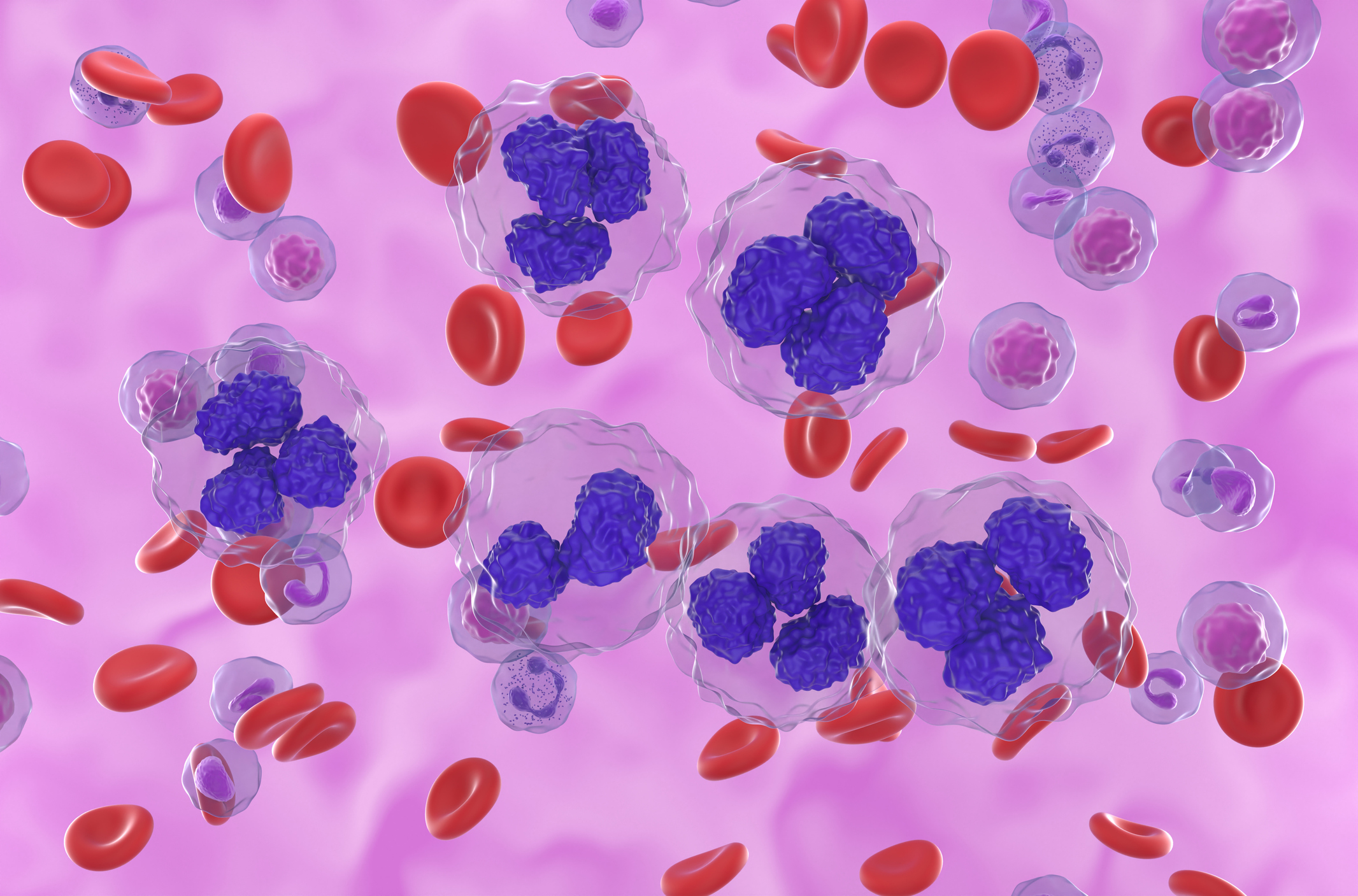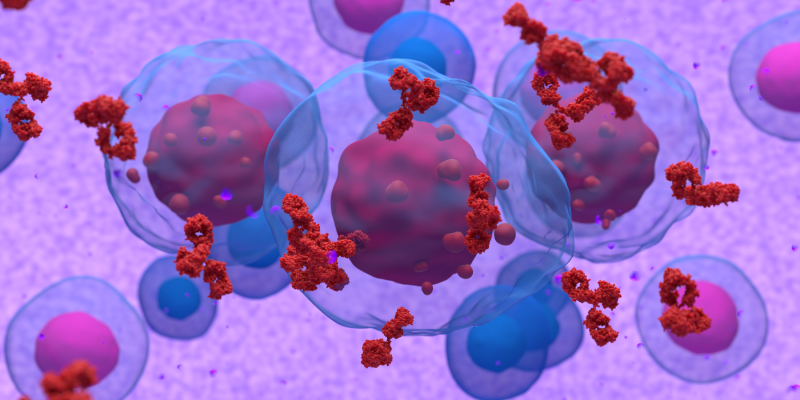
Major developments in targeted therapies, particularly Bruton’s tyrosine kinase (BTK) inhibitors, have significantly improved outcomes for patients with hematologic malignancies included chronic lymphocytic leukemia (CLL), small lymphocytic lymphoma (SLL), and Waldenström macroglobulinemia (WM).
Ibrutinib was the first BTK inhibitor approved for patients with CLL or SLL, but was associated with some safety concerns, most notably cardiac toxicities. Subsequent BTK inhibitors, such as zanubrutinib, sought to avoid these concerns without sacrificing effectiveness.
In the open-label phase III ASPEN trial, zanubrutinib showed comparable efficacy and improved safety versus ibrutinib in participants with WM, though it did not meet the primary analysis end point at a median follow-up of 19.4 months. Researchers characterized the long-term safety and efficacy results of zanubrutinib in ASPEN participants after an additional two years of follow-up.
According to the extension study’s lead author, Meletios Dimopoulos, MD, Professor in the Department of Clinical Therapeutics at the National and Kapodistrain University of Athens, zanubrutinib exhibited consistent efficacy and was associated with a reduced risk of adverse event (AE)-related treatment discontinuation compared with ibrutinib in patients with WM. “Overall,” Dr. Dimopoulos and colleagues wrote, “these findings confirm the long-term response quality and tolerability associated with zanubrutinib.”
From January 2017 to July 2018, the ASPEN trial enrolled 201 patients with myeloid differentiation primary response 88 (MYD88)-mutated WM, 26 with wild-type MYD88 WM, and two with unknown mutation status. Patients with MYD88-mutated WM were randomized between zanubrutinib (n=102) and ibrutinib (n=99), while those with wild-type MYD88 or unknown WM (n=28) all received zanubrutinib. The zanubrutinib dose was 160 mg twice daily in both cohorts and the ibrutinib dose was 420 mg once daily.
Zanubrutinib versus ibrutinib responses
In the comparison cohort, the authors noted more zanubrutinib recipients were older than 75 years of age compared with ibrutinib recipients (33.3% vs 22.2%; P=.084), and more had CXC motif chemokine receptor 4 (CXCR4)-mutated disease (32.4% vs 20.2%; P=.073). After a median follow-up of 44.4 months (range, 0.4-57.3), 65.7% of patients randomized to zanubrutinib were still on treatment compared with 51.5% of patients randomized to ibrutinib. In the secondary cohort, 35.7% of patients remained on zanubrutinib after a median follow-up of 42.9 months (range, 2.3-53.7).
According to Dr. Dimopoulos and colleagues, the rate of very good partial responses (VGPR) with zanubrutinib increased over time and was higher than ibrutinib at all time points. Patients on zanubrutinib had a median time to VGPR of 6.7 months compared with 16.6 months in patients on ibrutinib. Median times to overall or major responses were comparable between the groups, and median durations of response were not reached.
Among patients with CXCR4 mutations, those on zanubrutinib showed higher major response rates and faster median time to response compared with those on ibrutinib. Additionally, researchers reported the rate of VGPR or complete response (CR) was numerically higher with zanubrutinib versus ibrutinib, regardless of CXCR4 mutation status or mutation type.
Among patients with extramedullary disease at baseline, the VGPR or CR rate was 18.8% (95% CI, 2.4-35.1) higher with zanubrutinib. The authors noted this difference was in line with the greater median reductions in lymphadenopathy (65.9% vs 52.5%) and splenomegaly (20% vs 15%) observed with zanubrutinib versus ibrutinib, respectively.
In the comparison cohort, the rates of VGPR or CR based on number of previous lines of therapy are shown in TABLE 1.
Table 1. Zanubrutinib Versus Ibrutinib VGPR, CR Rates
| Treatment | 0 Lines | 1-3 Lines | >3 Lines |
| Zanubrutinib | 36.8% | 36.8% | 28.6% |
| Ibrutinib | 25.7% | 25.7% | 28.6% |
In the 26 patients with wild-type MYD88 WM, the VGPR or CR rate was 30.8%, the major response rate was 65.4%, and there was one CR.
The investigators reported patients on zanubrutinib had fewer progression-free survival (PFS; hazard ratio [HR], 0.63; 95% CI, 0.36-1.12) and overall survival (OS; HR, 0.75; 95% CI, 0.36-1.59) compared with those on ibrutinib in the comparison cohort; however, neither median PFS nor OS were reached in the intention-to-treat population. The median PFS among patients with CXCR4-mutated WM receiving ibrutinib was 39.8 months.
The 42-month event-free PFS rate in the secondary cohort was lower than the rate with zanubrutinib in the comparison cohort at 53.8% versus 78.3%, though the rates of OS were comparable at 83.9% versus 87.5%, respectively.
Safety
Overall, nine zanubrutinib and 20 ibrutinib recipients in the primary cohort discontinued treatment due to adverse events, as well as six in the secondary cohort. Additionally, disease progression leading to discontinuation was reported in 14 zanubrutinib and 13 ibrutinib recipients in the primary cohort and eight in the secondary cohort.
Any grade diarrhea, muscle spasm, hypertension, atrial fibrillation or flutter, and pneumonia events were more common with ibrutinib compared with zanubrutinib, though neutropenia was lower with ibrutinib in the primary cohort. Notably, cardiovascular AEs were more prevalent in patients on ibrutinib, including one case of ventricular arrhythmia.
The researchers stated exposure-adjusted rates of atrial fibrillation or flutter, hypertension, and diarrhea were significantly lower with zanubrutinib compared with ibrutinib (descriptive P<.05). Additionally, the prevalence of neutropenia and infection decreased over time with zanubrutinib, and after 36 months of treatment, incidence of infection was lower with zanubrutinib compared with ibrutinib.
More patients receiving ibrutinib required dose reductions due to AEs compared with those receiving zanubrutinib. Further, researchers recorded discontinuation due to treatment-emergent AEs in 20 (20.4%) patients on ibrutinib versus nine (8.9%) patients on zanubrutinib. In the comparison cohort, AE-related deaths occurred in five patients on ibrutinib and three on zanubrutinib. Three AE-related deaths occurred in the secondary cohort.
Zanubrutinib achieved meaningful efficacy
The study’s findings were limited by its open-label design and enrollment of patients with unknown CXCR4 mutation status; additionally, more patients with CXCR4 mutations were randomized to receive zanubrutinib relative to ibrutinib, “all of which may have influenced the VGPR [or] CR rates observed,” the investigators acknowledged.
Nonetheless, the study concluded zanubrutinib achieved meaningful efficacy and favorable safety across two years of additional follow-up in the phase III ASPEN trial extension. They highlighted that zanubrutinib induced a VGPR or CR in 31% of patients with wild-type WDY88 WM after 44 months of follow, including one CR. In previous studies, no wild-type WDY88 WM patients achieved a major response with ibrutinib nor a VGPR or CR with acalabrutinib, Dr. Dimopoulous wrote.
Zanubrutinib was associated with increased treatment duration and reduced risk of dose reduction or discontinuation due to AEs. The improved BTK selectivity of zanubrutinib led to fewer side-effects related to off-target binding compared with ibrutinib, including cardiovascular toxicities. Additionally, patients on zanubrutinib who were previously intolerant to ibrutinib or acalabrutinib did not exhibit recurrence of treatment-related AEs.
Ultimately, Dr. Dimopoulos and colleagues suggested the “extended follow-up results confirm improved long-term safety and tolerability of zanubrutinib compared with ibrutinib and support deeper, earlier, and more durable responses in patients with WM regardless of previous treatment or CXCR4 and MYD88 mutational statuses.”
Reference
Dimopoulos MA, Opat S, D’Sa S, et al. Zanubrutinib versus ibrutinib in symptomatic waldenström macroglobulinemia: final analysis from the randomized phase III ASPEN study. J Clin Oncol. 2023;JCO2202830. doi:10.1200/JCO.22.02830






 © 2025 Mashup Media, LLC, a Formedics Property. All Rights Reserved.
© 2025 Mashup Media, LLC, a Formedics Property. All Rights Reserved.